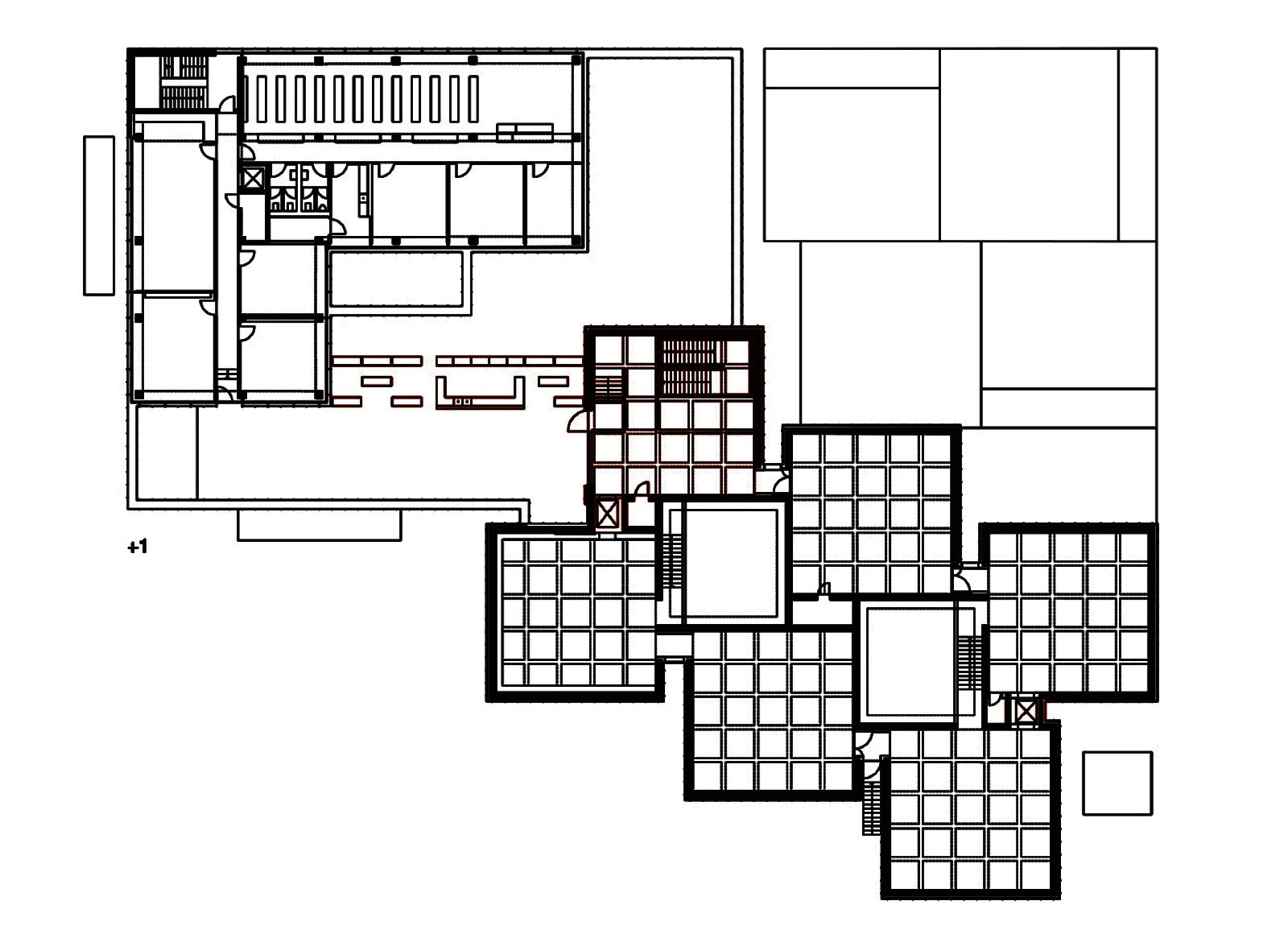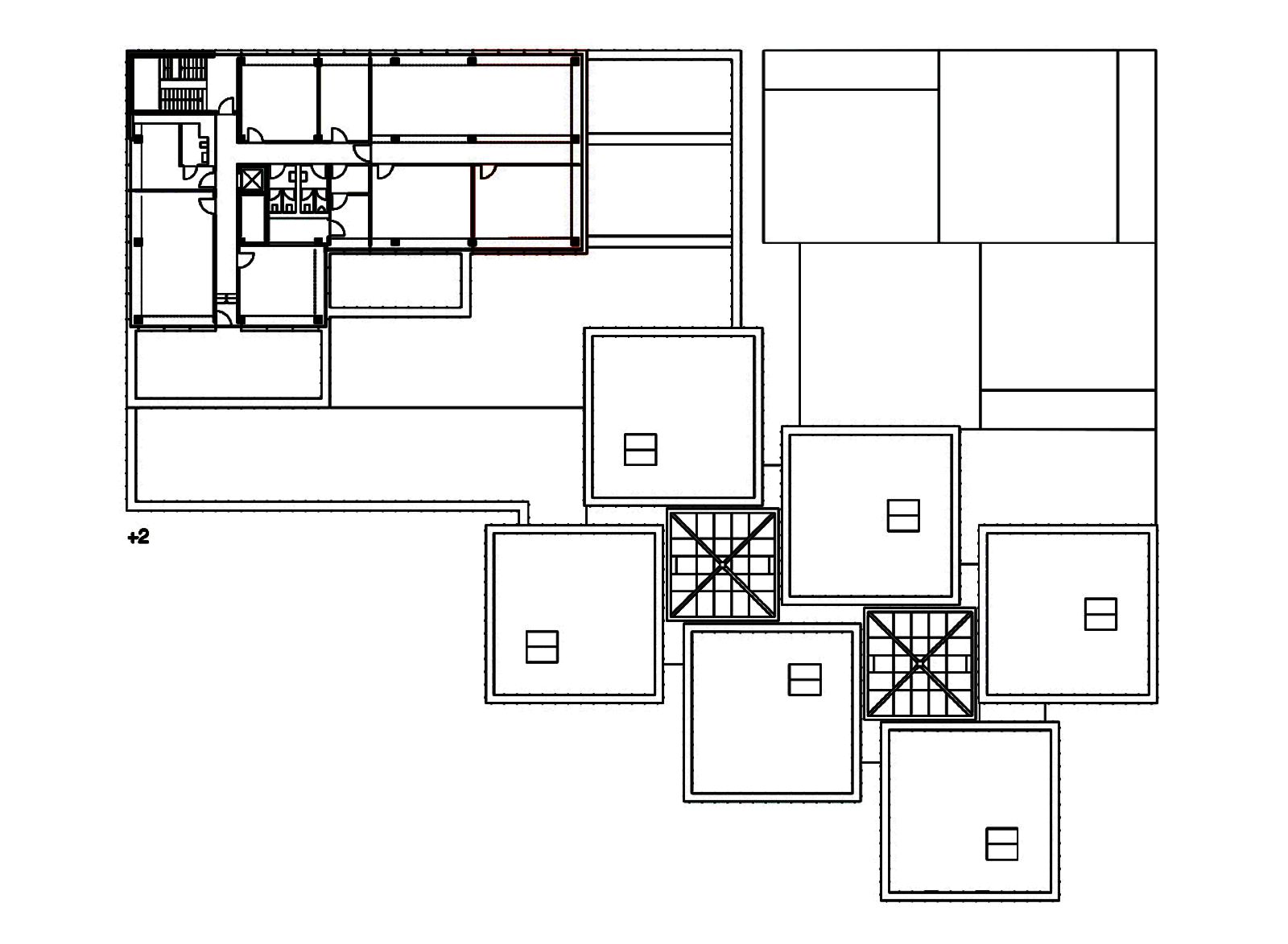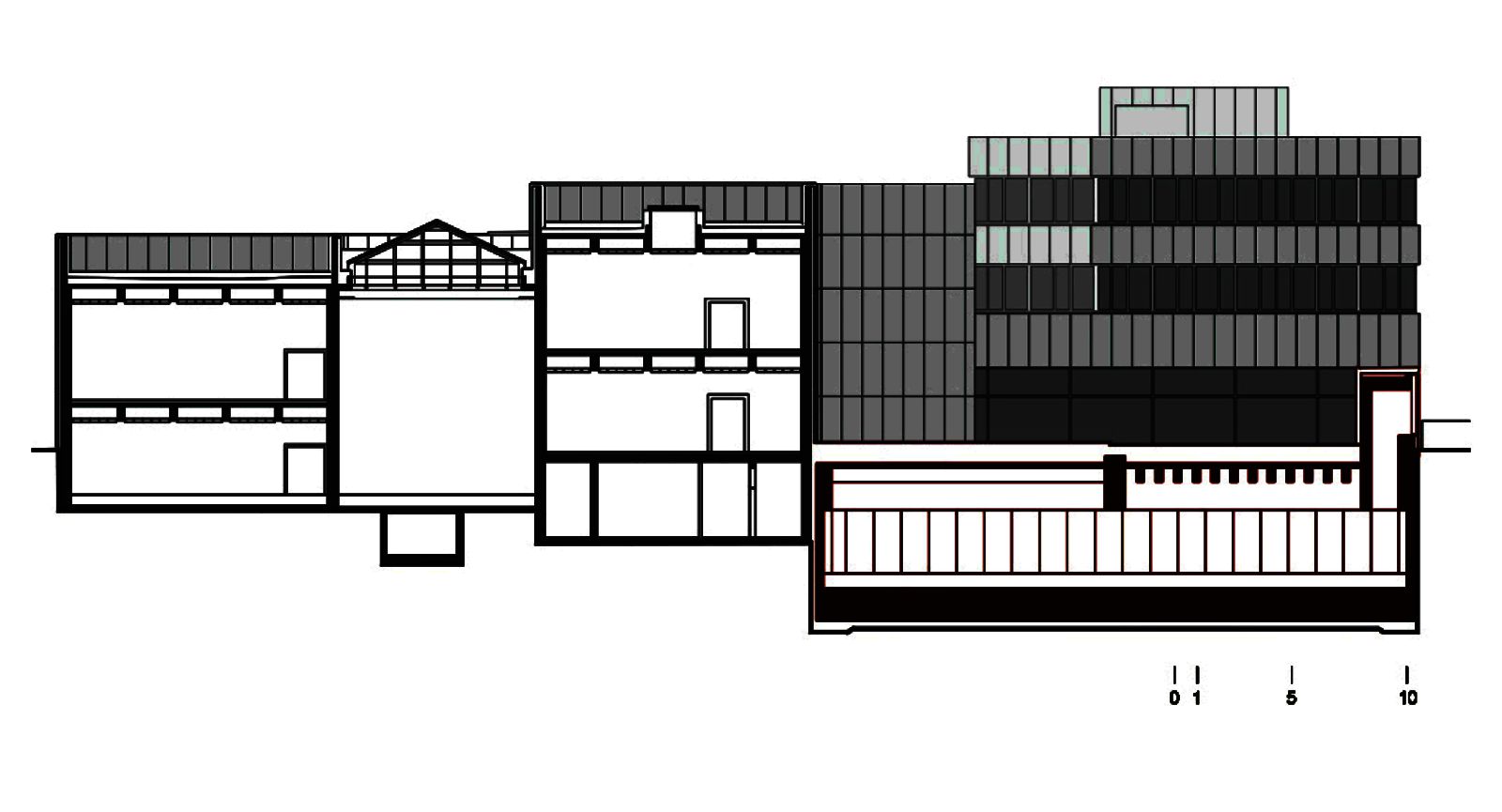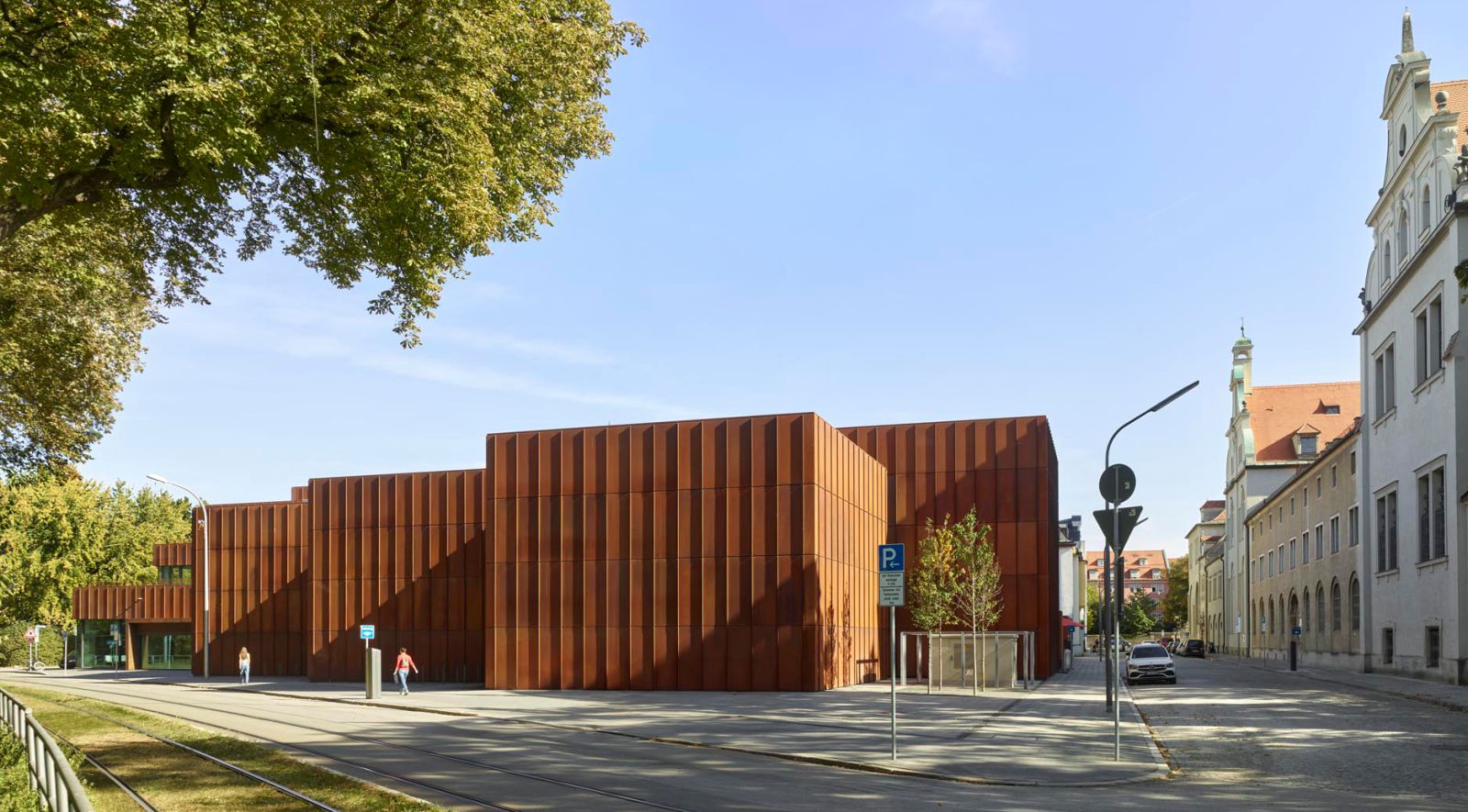Over three decades, von Werz designed and built numerous works of various types and programs, with the Bavarian State Archaeological Museum, constructed between 1970 and 1975, standing out as one of the most prominent examples of new museum architecture in Germany at the time.
Six cubic volumes dominate the appearance of the building facing Englischer Garten Park, where the use of corten steel, then a relatively unknown material, became the hallmark and image of the museum. After more than four decades, the passage of time made it necessary to undergo a significant transformation, an expansion of the exhibition spaces, and a complete update of the museum in its functional and technical aspects.
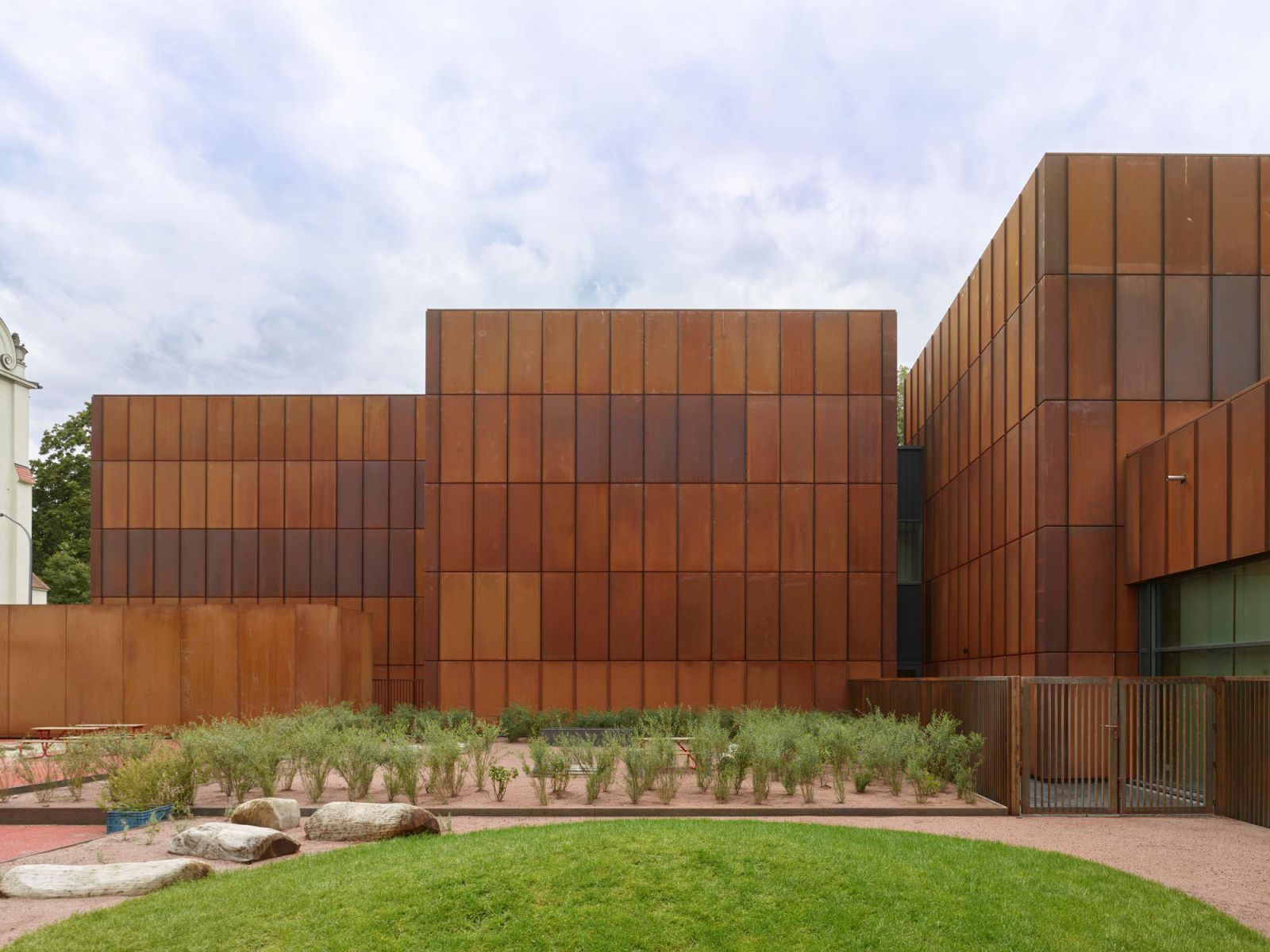
Although von Werz’s project was not officially protected by the Bavarian heritage conservation institution, which theoretically would have allowed for radical alterations or even demolition, our proposal was based on an opposite approach, conscious of both its architectural quality and the environmental reasons that favor the rehabilitation of existing structures rather than their demolition. Working within the material and conceptual constraints of a building requires discipline and restraint.
On one hand, it involves relinquishing the prominence of new interventions, and on the other hand, discovering areas of freedom within the existing limits that enable transformation. Similarly, our rehabilitation project for the Munich Archaeological Museum is the result of a patient and precise process within the constraints of the original project, guided by its own geometric, construction, and spatial laws to find the meaning of the new intervention and expansion.
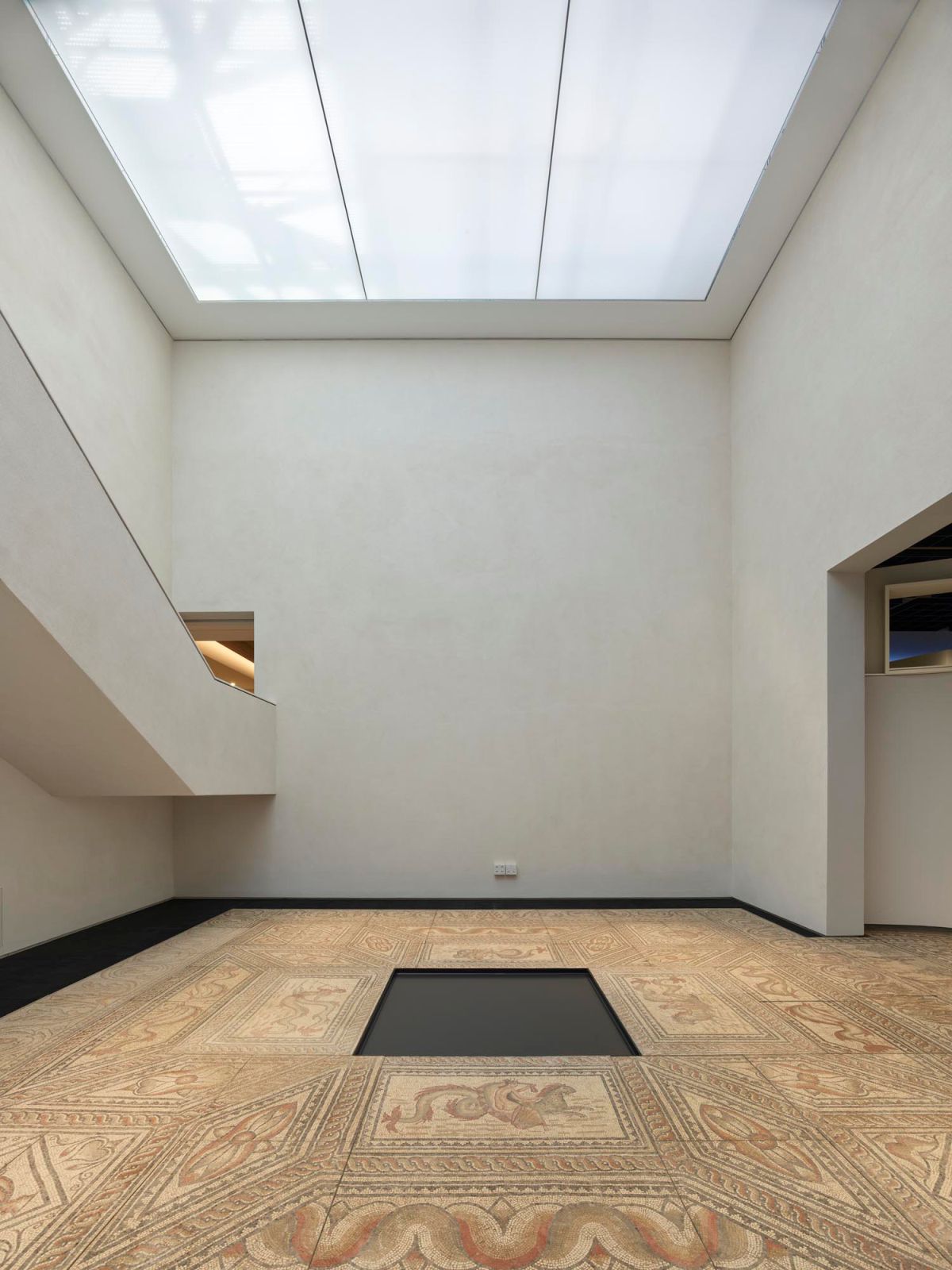
Recognizing the values of the existing building in formal, spatial, and material terms, the museum is faithfully restored in its most prominent architectural elements. The new additions are primarily limited to the insertion of a spacious public staircase, the expansion of administrative and conservation areas, and the construction of a large, column-free underground exhibition hall.
The square shape of the gallery, covered with an exposed concrete structure, resonates with the orthogonal geometry of the original project, offering a large exhibition space that can be subdivided. A system of in-situ concrete beams with basaltic aggregate and black-pigmented cement spans 27-meter-long spaces over a vast horizontal area, illuminated through perimeter skylights that, as they emerge from the ground, demarcate a childrens playground area for the adjacent nursery, thematically conceived as a small archaeological garden.
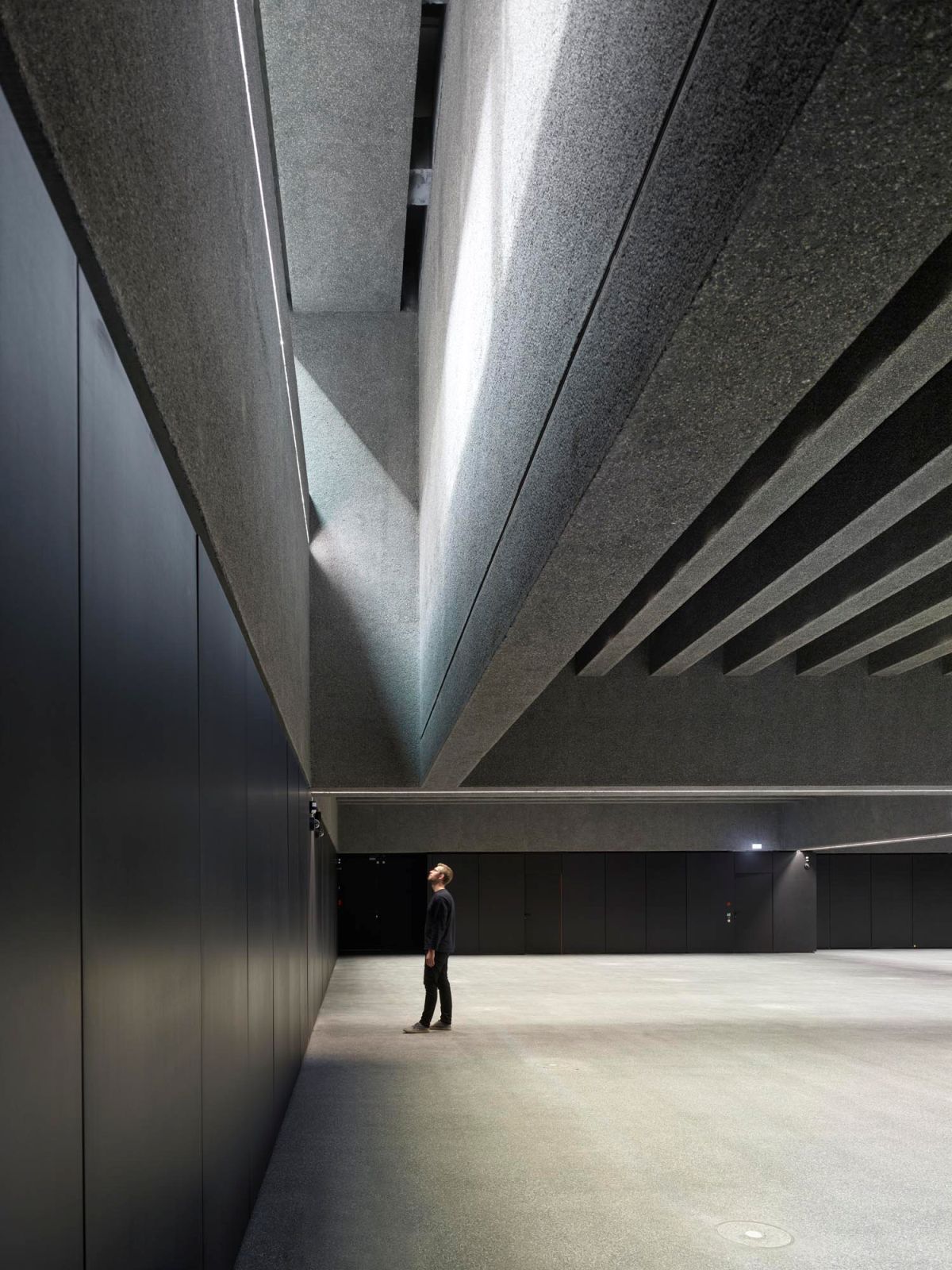
The facades of the corten steel cubes, entirely replaced, retain the dimensions and proportions of the original design, modifying only their thickness, anchoring systems, and thermal insulation, so that, at first glance, the building appears unchanged after its rehabilitation, maintaining the same precise and abstract appearance that characterized it since its construction.
The bearing structure thus becomes the formal support of the space and the focal point of the interior image of the new architectural intervention. And yet, as we approach and enter inside, we discover a completely renovated museum, where each of its spaces has been transformed to varying degrees, in an architecture that, reaffirming the thought of the German poet, finds its freedom within limitations. Source by Nieto Sobejano Arquitectos.

- Location: Munich, Germany
- Architect: Nieto Sobejano Arquitectos
- Architect in charge: Fuensanta Nieto, Enrique Sobejano, Patricia Grande, Johannes Hanf
- Project architect: Anja Lunge
- Project team: John Bohlmeyer, Rus Carnicero, Juana Colombo, Jorge Américo Dominguez, Oliver Hasselbach, Jean-Benoit Houyet, Lorna Hughes, Philipp Jacob, Philip Kempfer, Per Köngeter, Aleksandra Kudriashowa, Morgan Moreau, Riccardo Sanquerin, Tobias Schmalfuß, Sarah Schmidt, Anastasia Svirski, Mariana Varela, Claudia Wulf
- Site management: BM.C – Baumanagement GmbH, München, Drees & Sommer München
- Project management: Drees & Sommer München
- Structural engineer: Sailer, Stepan & Partner, Munich
- Mechanical engineer: Canzler Ingenieure GmbH, Munich, Duschl Ingenieure GmbH & Co KG, Munich, Teuber+Viel, Ingenieurgesellschaft für Energie- und Gebäudetechnik mbH
- Facade engineering: Priedemann Fassadenberatung GmbH
- Building physics / Acoustic consultant: Ingenieure Süd GmbH, Munich
- Fire safety consultant: Müller-BBM Building Solutions GmbH
- Lightning consultant: Oswin Nikolaus Lichtgestaltung
- Exhibition planning: Atelier Brückner Gmbh
- Client: Bavarian Building Authorities Munich
- Total floor area: 7.650 m2
- Completion: 2024
- Photographs: Roland Halbe, Courtesy of Nieto Sobejano Arquitectos

